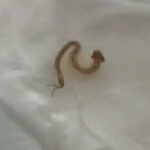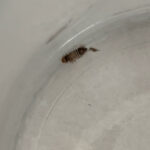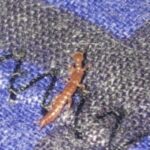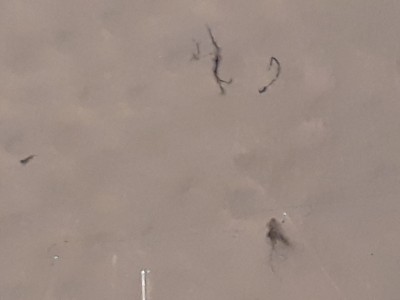Morgellons, more fully known as Morgellons disease or Morgellons syndrome, is a bizarre condition characterized by various symptoms that affect the skin (called “cutaneous symptoms”). People suffering from Morgellons report biting, stinging, and crawling sensations underneath their skin (or on their skin). These symptoms can feel like thin worms crawling underneath one’s skin. People with Morgellons disease also report black threads or fibers on their skin, as well as on materials like clothing. Those afflicted with Morgellons sometimes experience additional skin problems, like rashes or sores. Although real to the afflicted individuals, Morgellons is regarded by the medical community as a delusional infestation. Despite extensive studies, those suffering from Morgellons were found to have no pathogenic infestations, and researchers believe that the symptoms of Morgellons are delusions. People suffering from Morgellons disease are therefore believed to be suffering from psychological problems or other common skin diseases, according to the medical community. Just the same, Morgellons isn’t perfectly understood, and some even remain convinced that the disease is not strictly psychological.
We’ve written about Morgellons before, but it came to our attention again recently when a reader wrote to ask about “morgellons worms” or “something that looks like [a] small black worm that lives in bedding.” The reader didn’t ask anything particular about these “worms,” so we figured we would take this opportunity to give an update on the state of Morgellons research. (For the record, we should note that the “worms” or fibers reported by those with Morgellons disease, and perhaps those reported by our reader, are not worms at all. They are regular clothing fibers, according to the research.)
There have been a couple of different major studies conducted about Morgellons. One was conducted by the Mayo Clinic and involved 108 patients. This study failed to find evidence that the patients had a skin infestation, a conclusion that was reached after skin biopsies were performed and specimens from patients were examined. After this study, the Mayo Clinic concluded in 2011 that feelings of a skin infestation associated with Morgollons were the result of delusions.
In response to sufferers writing thousands of letters to Congress, the Center for Disease Control and Prevention agreed to further investigate the matter. The study sought to report on the geographical distribution of the disease and the rates of the illness in affected communities. Skin biopsies and blood tests were performed, and fibers and threads (the so-called “worms”) obtained from patients were studied. Over 100 patients were also interviewed about the disease. The study, the results of which were published in a peer-reviewed journal in 2012, yielded no evidence of an infection, and no common environmental factors were found to be affecting patients. The threads that were found on patients were made of the standard materials of clothing, like cotton, as we noted above. The researchers concluded that the sensations experienced by patients could be a delusional infestation, one that caused people to believe that their bodies were being infected by small organisms.
The extent to which you trust modern medical science is the extent to which you should believe that Morgellons disease is a delusional infestation. This conclusion is overwhelming supported by the extensive research conducted into the condition, as well as by the vast majority of the medical community. As is always the case, though, science is subject to revision, and perhaps future research will revise or change the consensus currently held by most medical professionals. In any case, if Morgellons is a psychological condition, as seems to be the case, this of course in no way implies that those with Morgellons are not actually suffering. Psychological problems can torment a person just as much as a physical ailment, and those who report sensations consistent with Morgellons are typically prescribed antipsychotic drugs to alleviate the symptoms.
All About Worms is always free, always reader-supported. Your tips via CashApp, Venmo, or Paypal are appreciated! Receipts will come from ISIPP Publishing.














